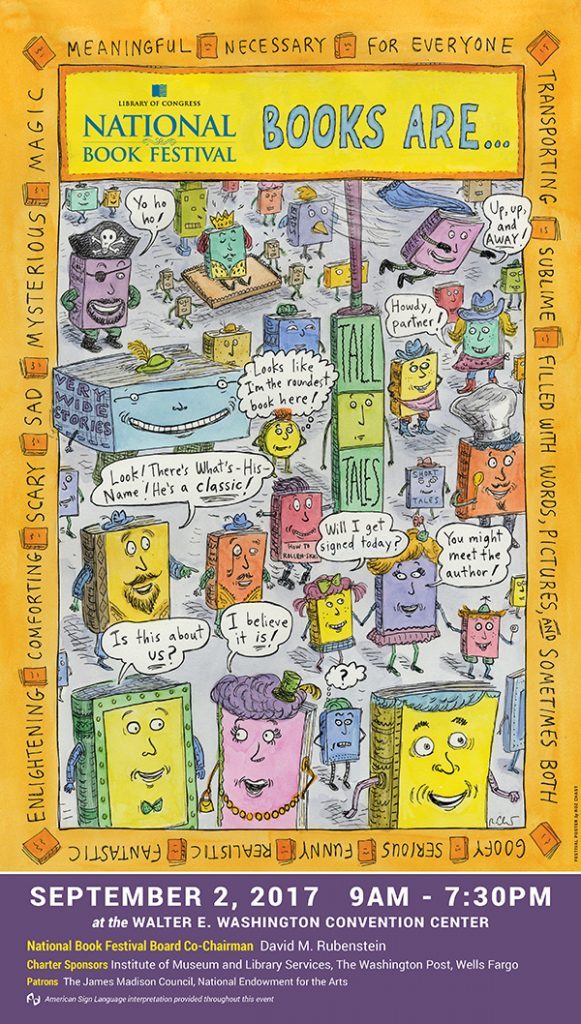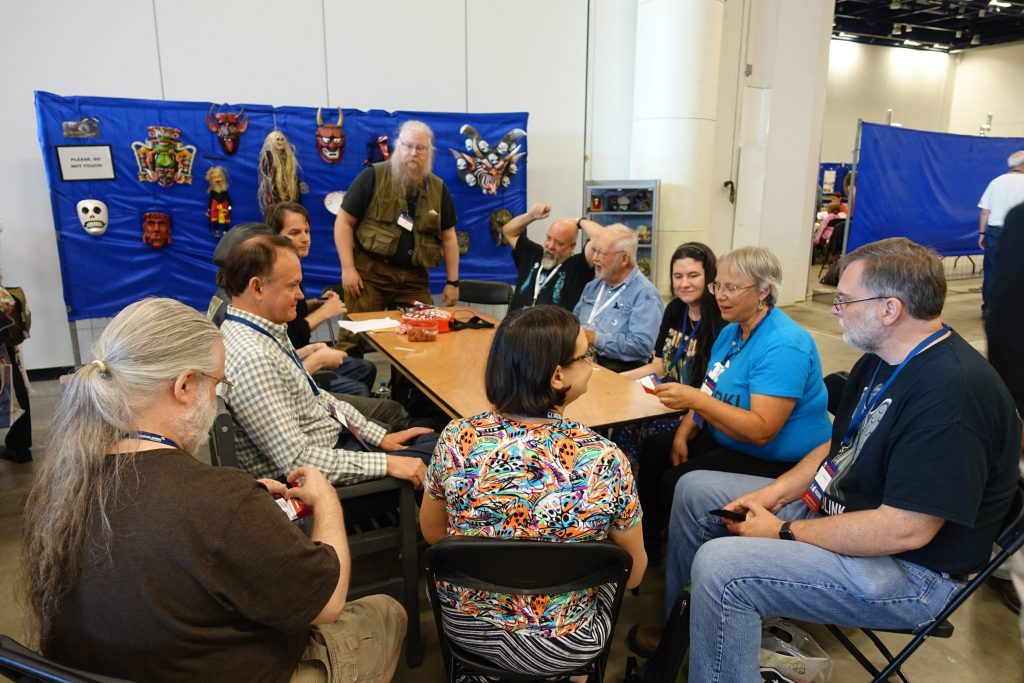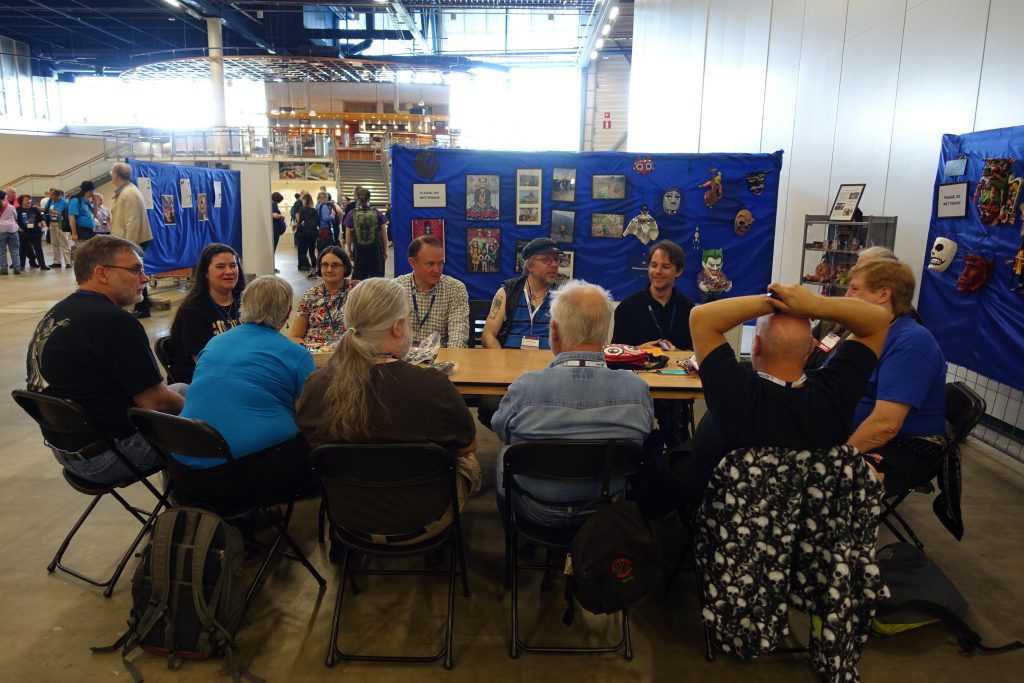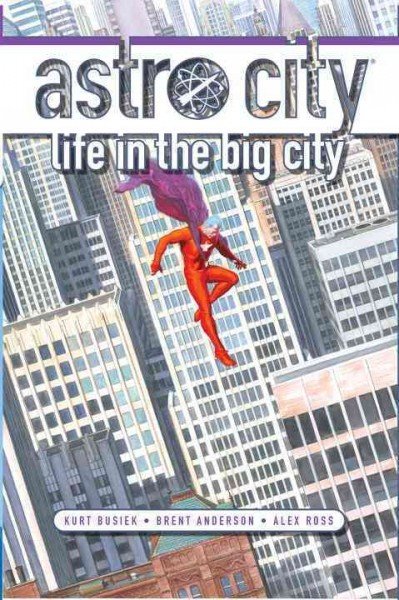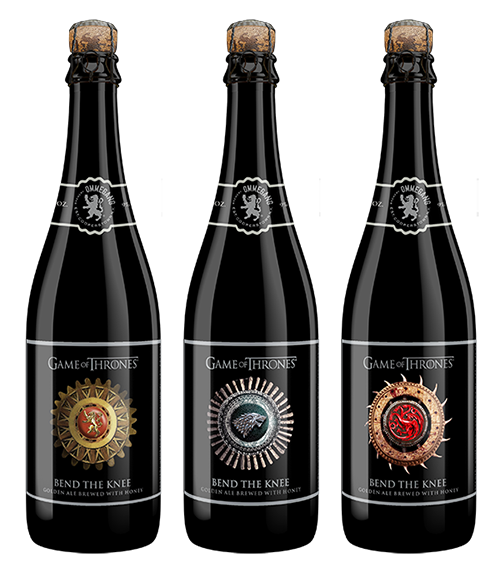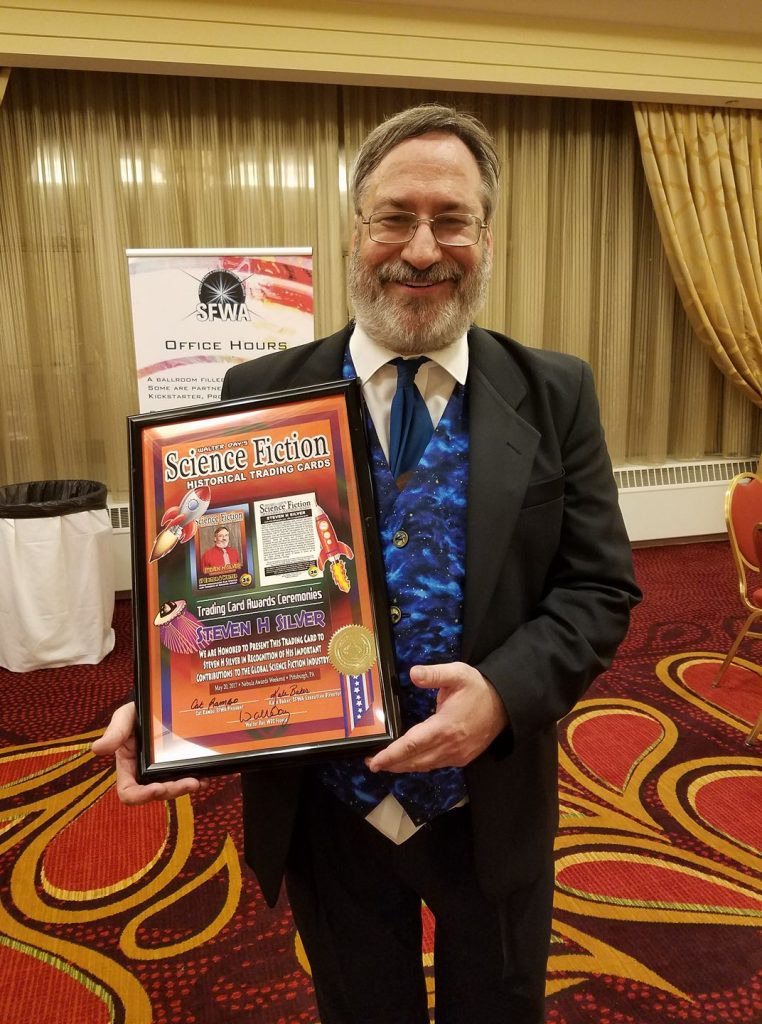(1) CHECK-IN. The 1954 Worldcon chair Les Cole and Esther Cole, who live in the vicinity of the Ventura, CA fires answered Rich Lynch’s query about how they are doing —
Thanks for asking. Les and I and doggies are OK. Fire went passed us. The air is heavy, so we stay indoors. Much of southern California is rough.
(2) HERBERT MAY BE HONORED BY HOMETOWN. Metro Parks Tacoma Public Information Manager Michael Thompson says a recommendation to name a local peninsula “Dune Peninsula at Point Defiance Park” and its loop trail “Frank Herbert Trail” probably will go to the Park Board for a vote in January. The proposal has been working its way through the system for some time. The News Tribune has an update: “‘Dune’ author Frank Herbert finally set to get his due in his hometown of Tacoma”:
While the Metro Parks Board will have the final say on the matter — and it’s the elected body’s prerogative to deviate or tweak — it’s clear that the public has spoken, and Metro Parks’ staff has attempted to listen. During a public outreach effort earlier this year, more than 500 possible names were submitted via an online survey. The majority of responses referenced Herbert or “Dune.”
“This name provides a simple, evocative identifier that highlights the uniqueness of the peninsula remediation and new park features,” according to the staff recommendation. “On a literary level, it honors the name of the book series by Frank Herbert, a famous Tacoma author, which was inspired by the environmental history of Tacoma’s Asarco copper smelter site, directly adjacent to the peninsula.”
Last month, Thompson helped a local radio reporter tour the peninsula with park commissioner Erik Hanberg. “‘Dune’ And The City Of Destiny: How Tacoma Inspired One Of The World’s Most Acclaimed Sci-Fi Authors”.
If you go to the base of Point Defiance in Tacoma and look east, you’ll see a finger of earth jutting into Puget Sound.
It formed as toxic slag spilled from a copper smelter during the city’s industrial heyday.
For years, it was a foreboding sliver of black, glassy material. Today, workers and machines roam the peninsula as they transform it into a grassy park with Puget Sound views.
Tacoma Metro Parks Commissioner Erik Hanberg has a space-age term for what’s going on there. He calls it “terraforming.”
(3) BACK TO THE STACK. Doris V. Sutherland does a good job framing the issues in “Rocket Stack Rumpus: Critics, Authors, and Non-Binary Science Fiction” accompanied by light analysis. Sutherland concludes:
Greg Hullender responded by writing an apology-cum-rebuttal in collaboration with Eric Wong and altering the offensive reviews. Despite this, he has paid a high price for his faux pas. Locus decided that he was unfit to recommend stories to readers and removed him from its reading list jury, making the following announcement on Twitter.
Thank you to those who brought their concerns about RSR to our attention. Greg Hullender will not be involved in the Locus Recommended Reading List. We support our wonderfully complex and diverse SF community, and hope for continued positive dialogue on these issues.
The reference to positive dialogue seems out-of-place. The Rocket Stack Rumpus marks a breakdown in communications all around, from a reviewer missing the point of the stories he was covering, to authors misreading his reviews in turn. Meanwhile, the issue of Rocket Stack Rank’s provincial approach to stories set against non-Western cultural backdrops–as flagged up by Rose Lemberg in this Twitter thread–ended up being lost alongside Hullender’s misunderstanding of non-binary SF, which is perhaps a secondary issue.
There may well be positive dialogue to come out of the controversy, but at the present moment, there is little of it to be seen.
(4) MEAT AND PROPER. Autocorrect is being blamed rather than legislators falling down on the job: ” Typo in Bill C-45 legalizes cannibalism instead of cannabis”.
Canada is one step closer to the accidental legalization of cannibalism after the House of Commons passed a typo-ridden Bill C-45, formerly known as The Cannabis Act.
“I think no one wanted to be the one to point out the error,” MP Sara Anderson said. “We all thought someone else would do it, and then they called the vote, and here we are, all voting to legalize cannibalism.”
(5) RADICAL CHANGE. If this catches on, Twitter will get awfully quiet.
Anyway….I've come out with a new policy of not tweeting about something until I actually know wtf I'm talking about so I don't accidentally spread misinformation. I'm sorry I did that earlier today.
— Hank Green (@hankgreen) December 8, 2017
(6) ANDERS STORY COLLECTION. At Locus Online, “Rachel Swirsky reviews Six Months, Three Days, Five Others by Charlie Jane Anders”.
Anders’s unique humor provides a uniting theme. Only some of the stories are explicitly comic, but all benefit from her linguistic wit and her quirky but generous characterization. Her stories seem to say with affection, “People. We’re weird. What can you do?” She’s particularly good at tailoring prose to her characters, revealing their lives through their diction. Characters go to “one of those mom-and-pop Portuguese places” and “the kinda-sorta gay bar.”
(7) MCDUFFIE AWARD OPEN. The 4th Annual Dwayne McDuffie Award for Diversity in Comics is taking entries until December 31.
Please attach a link or a 15mb .PDF file of the work to be considered. When submitting work, we strongly suggest sending the first issue of a series. If submitting anything other than the first issue, a one-page synopsis of what came before must accompany the submission. Also, we suggest sending the first 25-30 pages or first chapter of a graphic novel. We cannot guarantee anything more will be considered. If one is available, please also attach a .JPG photo of the entrant to the email. Please do not include any further attachments.
The award’s three new selection committee members are Jennifer de Guzman, Jamal Igle and Mikki Kendall, who join Mark D. Bright, Joan Hilty, Heidi MacDonald, Kevin Rubio, Gail Simone, and Will J. Watkins.
(8) ELIGIBILITY POSTS. Cat Rambo is doing her annual award eligibility post round-up, this year including editors, publishers, and magazines: “2017 Award-Eligible Work Blog Posts & Roundups for F&SF”. Right now there are about 20 entries on the list. She will be doing daily updates.
(9) CLASS TOMORROW. Cat Rambo says there is still space, including a couple of free slots, in the December 9 class “Speculative Poetry with Rachel Swirsky”.
Next classes are Saturday, December 9 – 9:30-11:30 AM or Wednesday, February 7, 2018, 4-6 PM. (Each class is a separate session.)
Poetry requires intense linguistic control. Every word matters. Whether you’re a poet who wants to create fantastical verses, or a prose writer who wants to learn the finely tuned narrative power that poetry can teach, you’ll find something in this class.
(10) WRITER’S LIFE. A short interview with Ursula K. Le Guin at Shelf Awareness:
Who do you write your blog for? Do you ever read the comments, and if so, what do you learn from them, if anything?
I write them for anybody who wants to read them. (Writers live in hope.)
Yes, sure, I read all the comments. They’re mostly good-natured, and some are thoughtful and enlightening.
You say that dystopian literature is yang-driven, and its opposite–utopian literature–is also yang-driven. Is there a literature that presents a realistically complex vision of a world in balance? Or is that just fantasy?
Of course it’s just fantasy. That’s why I write fantasy…
(11) NOBODY LIKES BEING SLAPPED. Cat Rambo, talking about writers and audiences: “Nattering Social Justice Cook: This Is Not A Review”.
So why did this book hit me so hard in an unhappy place? Because it was so smart and funny and beautifully written and involved connected stories about a favorite city and magic, which are three of my favorite things. And because it had a chapter that was one of the best short stories about addiction that I’ve read, and that left me thinking about it in a way that will probably shape at least one future story.
And yet. And yet. And yet. Women were either powerful and unfuckable for one reason or another or else fell into the category marked “women the protagonist sleeps with”, who usually didn’t even get a name. Moments of homophobic rape humor, marked by a repeated insistence on the sanctity of the hero’s anus, and a scene in which he embraces being thought gay in order to save himself from a terrible fate, ha ha, isn’t that amusing. And I’m like…jesus, there is so much to love about this book but it’s like the author reaches out and slaps me away once a chapter or so.
(12) TODAY IN HISTORY
- December 8, 1991 – Hook premieres in Hollywood.
(13) TODAY’S BIRTHDAY BOY
- Born December 8, 1950 – Rick Baker, the Monster Maker
(14) COMICS SECTION.
- John King Tarpinian saw that First Contact isn’t going too well in Close To Home.
(15) END OF THE MAZE. Maze Runner: The Death Cure comes to theaters January 26.
In the epic finale to the Maze Runner saga, Thomas leads his group of escaped Gladers on their final and most dangerous mission yet. To save their friends, they must break into the legendary Last City, a WCKD-controlled labyrinth that may turn out to be the deadliest maze of all. Anyone who makes it out alive will get answers to the questions the Gladers have been asking since they first arrived in the maze.
(16) CONTRARIAN. Go figure. While Patreon was in flames yesterday, Jon Del Arroz climbed aboard — “Jon Del Arroz Patreon Launch!”.
(17) EWW. It’s admittedly a mixed message when I say “Don’t look!” then put in a link anyway — “Here’s What It Looks Like When You Fry Your Eye In An Eclipse”.
“We were very surprised at how precisely concordant the imaged damage was with the crescent shape of the eclipse itself,” noted Dr. Avnish Deobhakta, a retina surgeon at New York Eye and Ear Infirmary of Mount Sinai in New York, in an email to NPR.
He says this was the most severely injured patient they saw after the eclipse. All in all, 22 people came to their urgent care clinic with concerns about possible eclipse-related damage, and most of them complained of blurred vision. Of those, only three showed some degree of abnormality in the retina. Two of them had only mild changes, however, and their symptoms have gone away.
The young woman described in this case report, at last check, still has not recovered normal vision.
(18) SUPPORTING SPACE EXPLORATION. Bill Nye says The Planetary Society’s latest collaboration with the Chop Shop store is mission posters for kids, like this one:
(19) TENTACLE TIME. In the garden: “‘Underwater city’ reveals mysterious octopus world”.
Once thought of as solitary creatures, scientists discover ‘underwater city’ full of octopuses living side by side
A couple of assumptions are often made about octopuses. First, that they are smart. There is truth in that: octopus behaviour such as tool use, predation techniques and puzzle-solving suggest a higher level of intelligence than other invertebrates. Everyone has watched an octopus unscrewing a jar.
Second, they have a reputation for being solitary. So solitary in fact that an official collective noun for octopuses doesn’t even exist (though ‘tangle’ has been suggested).
This may have to change, however. Over the last decade, scientists have discovered that octopuses aren’t always lone beasts. In fact, octopuses engage in rich, fascinating and unusual behaviours when they interact with each other.
(20) PATREON SURVIVOR, IF POSSIBLE. Cat Rambo is weathering the storm by asking readers how to add more value to her Patreon campaign (and also whether or not to bail from it): https://www.patreon.com/catrambo
Cat She says, “I’ve lost about 15% of my income from there so far, but I’m a very minor player. however if there is something the F&SF is not seeing from me but desperately yearns for, now’s the time to weigh in: “Patreon Changes”.
(21) FRONT PAGE NEWS. I have added to the File 770 sidebar a link to John Hertz’ review of The Glass Bead Game (Hesse), which has found a permanent online home.
(22) KRYPTON. SyFy has put out a teaser trailer for its series about Superman’s homeworld. ScienceFiction.com sums it up:
The series is set two generations before the destruction of the Man of Steel’s home planet. ‘Krypton’ follows Superman’s grandfather (Cameron Cuffe), whose House of El was ostracized and shamed, as he fights to redeem his family’s honor and save his world from chaos. The Seg-El name is both a nod to Superman co-creator Jerry Siegel and a reference to John Byrne’s 1980s miniseries, ‘The World of Krypton.’ Cameron Cuffe is set to play Seg-El alongside with Georgina Campbell as Lyta Zod.
(23) THE DARK SIDE. Charles Payseur turns his attention to dark fantasy and horror in “Quick Sips – The Dark #31”.
December brings a pair of stories to The Dark Magazine that focus sharply on observation and theater. In both, women drawn into roles where they are closely watched by men, and in both these experiences are further framed in terms of a sort of voyeurism. In one, a woman is filed, in the other, a woman is part of a play. Both feature stages and bring the reader in as spectators and in some ways as participants. We are the eyes that act as camera and as audience.
(24) BLOW BY BLOW. Sci-Fi Design has a gallery of “Comic Book Covers Recreated Using Balloons”.
Comic book cover art is awesome. They use a variety of styles, but have you ever seen comic book covers that are made from balloons? These awesome balloon sculptures as comic book covers were created by Phileas Flash. They take days to make and the pieces themselves fit into a 10 foot by 10-foot space. Then photoshop is used to add the letters which are also balloons. I love all of the detail that he gets with this unusual medium.

(25) POP CULTURE SUMMIT. Rolling Stone took notes: “Alice Cooper on His Dinner With David Bowie and Ray Bradbury”.
After Cooper’s initial meeting with Bowie in the late Sixties, they later forged a friendship. Once, they even had dinner together with Fahrenheit 451 author Ray Bradbury. “It was really interesting, because these guys were in outer space somewhere,” he says. “They were talking about quantum physics, and I’m going, ‘So … what kind of car are you driving?'” Cooper laughs.
(26) CAMERON PROJECT. Alita: Battle Angel Official Trailer.
From filmmakers James Cameron and Robert Rodriguez. Alita Battle Angel is in theaters July 20, 2018. Cast: Rosa Salazar, Christoph Waltz, Jennifer Connelly, Mahershala Ali, Ed Skrein, Jackie Earle Haley, Keean Johnson.
[Thanks to JJ, Cat Eldridge, Chip Hitchcock, John King Tarpinian, Cat Rambo, Greg Hullender, David K.M. Klaus, Carl Slaughter, Martin Morse Wooster, Rich Lynch, and Andrew Porter for some of these stories. Title credit belongs to File 770 contributing editor of the day Darren Garrison.]









